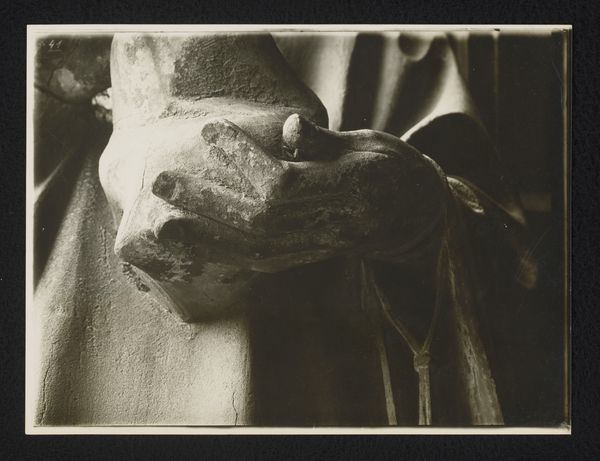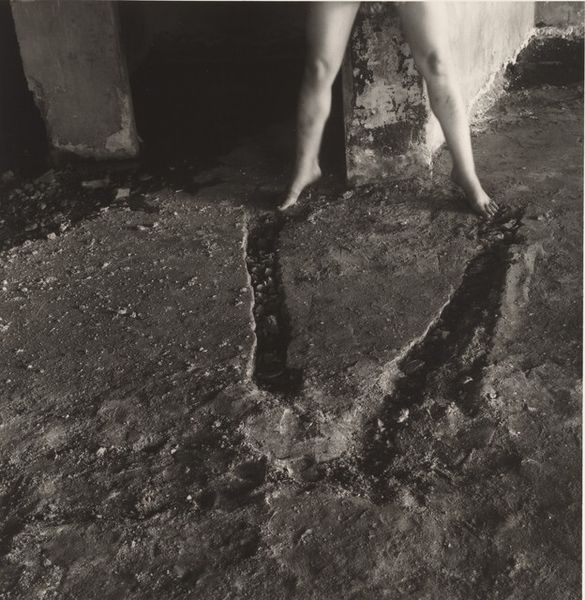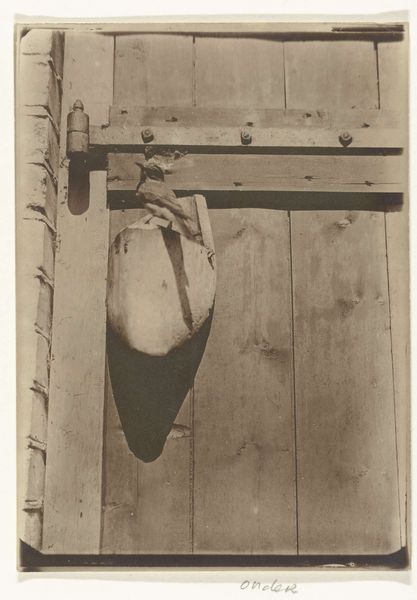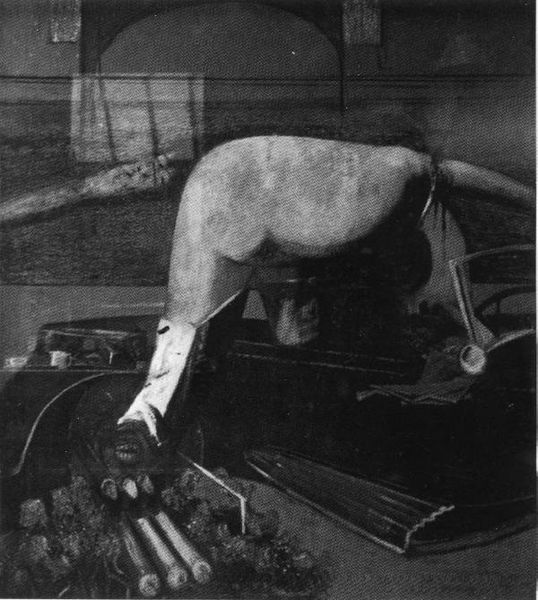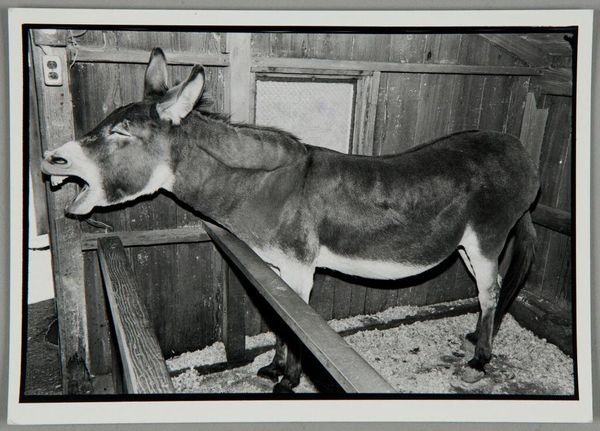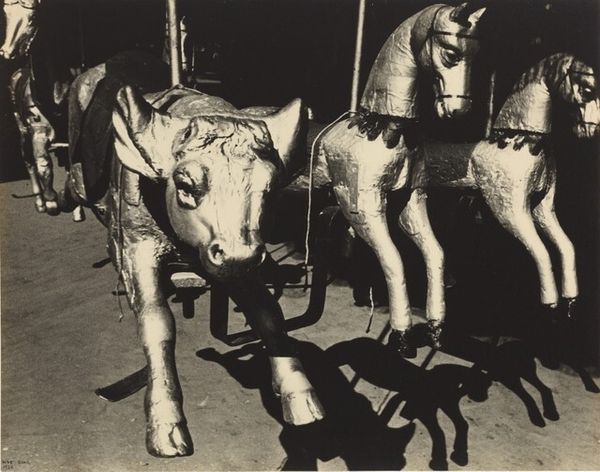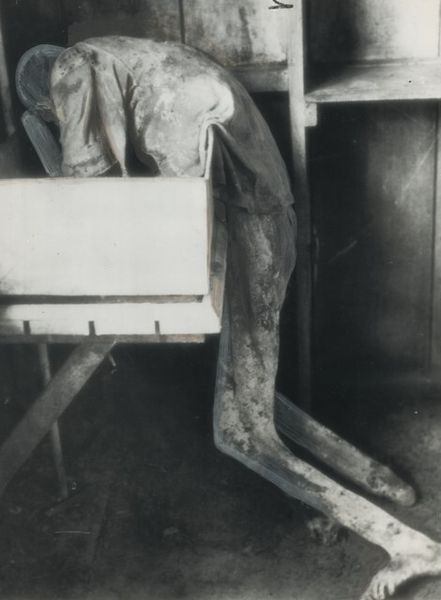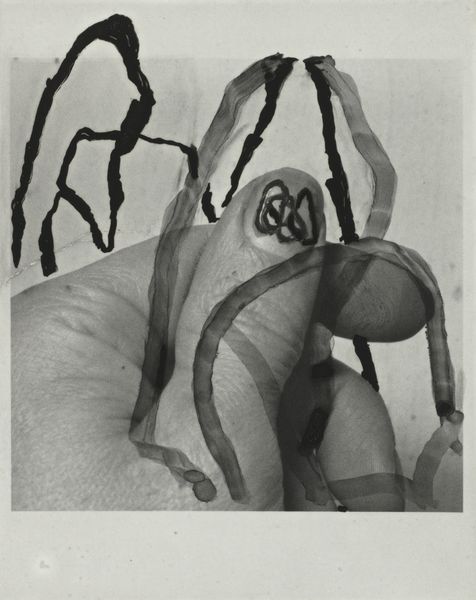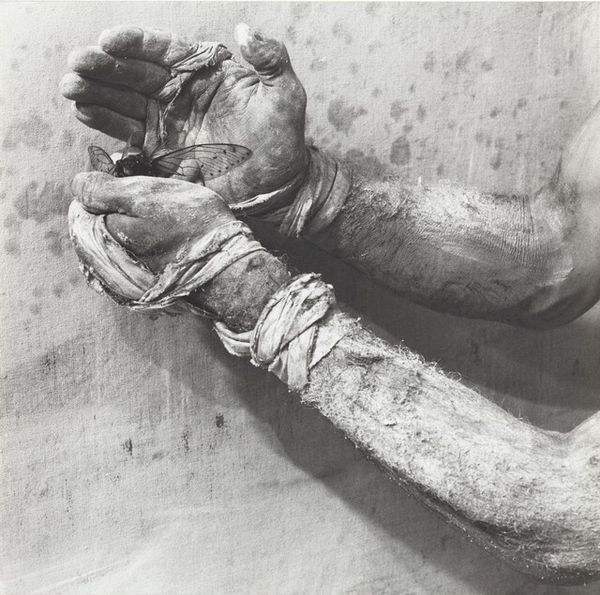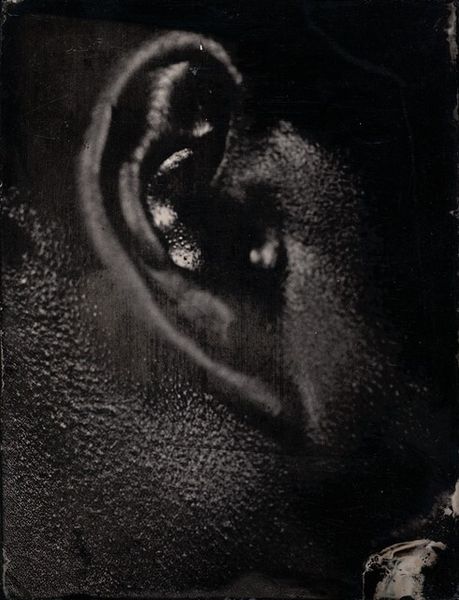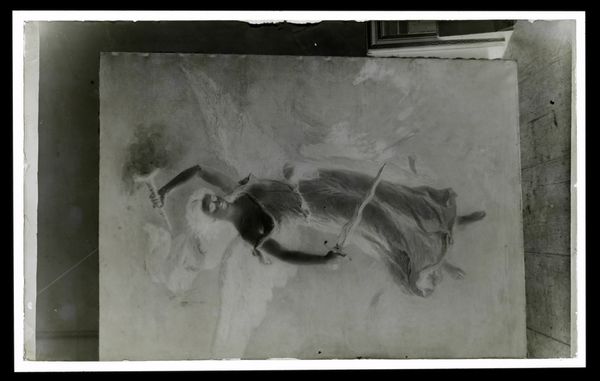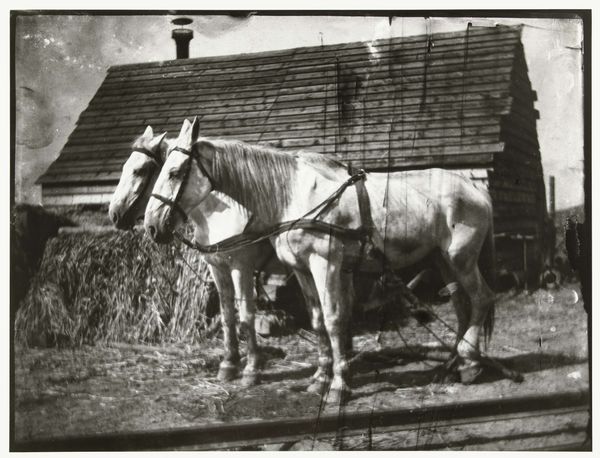
Dimensions: 11.6 × 9.1 cm (image/paper/first mount); 31.6 × 25.2 cm (second mount)
Copyright: Public Domain
Curator: Welcome, everyone. We’re looking at Alfred Stieglitz’s photograph, "Equivalent, Spiritual America," taken around 1923. It’s a gelatin silver print. What’s your immediate reaction to it? Editor: I find it surprisingly austere. The grayscale tones are quite narrow, and the forms, while recognizable as part of a horse harness, are almost sculptural in their starkness. Curator: Yes, and that starkness is deliberate. Stieglitz was deeply involved in the Photo-Secession movement and sought to elevate photography to the level of fine art. He intentionally called these "equivalents"—they’re not simply about the object they depict. Editor: So, it’s less about the equine labor, and more about...abstraction? The material quality—the silver gelatin printing process rendering of leather, chain, fur. Curator: Precisely. The “Spiritual America” part of the title came later, when Stieglitz declared it as such. This photo becomes, through that label, less about straightforward representation, and more about what the depicted objects could stand for. The “equivalent” for Stieglitz was his own emotional state. Editor: And it speaks to the socio-political anxieties of the time, post-World War One America, right? An America searching for new meaning and stability amid rapid industrialization and change. One thing to note is how his commitment to "straight photography"–no manipulation of the negative, emphasizes the documentary aspect inherent to the medium. He allows the textures and tonal values to speak for themselves. Curator: Exactly, which in turn made his turn towards metaphor even more subversive, but in alignment with the overall modernist cultural drive. He aimed to elicit emotion and contemplation, to move beyond literal documentation, making his photographs symbols of personal feeling and universal experience. Editor: Stieglitz really manages to transmute something quite functional – horse tack – into something transcendent here, revealing both its material qualities and some form of emotional impact. Curator: A complex interplay between form and content. The success is found in prompting reflections on how images acquire significance within a society that values art objects. Editor: Very true! A poignant example of how artistic process shapes a perspective and can offer emotional and societal commentaries.
Comments
No comments
Be the first to comment and join the conversation on the ultimate creative platform.
